> Python
Créer des applications graphiques interactives en Python avec Tkinter et CustomTkinter
- Niveau : Fondamental
- Référence : DIGT
- Niveau : Intermédiaire
- Référence : PYQT
Pandas, Matplotlib, XML, JSON, NumPy, SciPy, iPython, MapReduce, Matrices, Séries
- Niveau : Fondamental
- Référence : OAPY
Manipulez automatiquement des fichiers Excel, Word et PowerPoint avec Python
- Niveau : Intermédiaire
- Référence : ADOP
Exploiter le parallélisme, le calcul distribué et le Cloud avec Python
- Niveau : Fondamental
- Référence : PYCD
Python : tests d'intrusion
- 3 jrsUtiliser Python pour automatiser des tests d’intrusion, de la reconnaissance à la post-exploitation.
- Niveau : Intermédiaire
- Référence : OPYP
Data Visualisation en Python
- 3 jrsUtiliser les bibliothèques Matplotlib, Seaborn et Plotly pour la création de vos graphiques
- Niveau : Intermédiaire
- Référence : OPDV
À la découverte de Request, Asyncio, Scrappy et Selenium
- Niveau : Avancé
- Référence : OSCR
Snowpark pour Python
- 4 jrsSnowpark Python, Streamlit, Fast API, Machine Learning
- Niveau : Intermédiaire
- Référence : SNOW
Machine Learning avec Python
- 4 jrsCloud, IA, Scikit-Learn, SVM, Bayes, clustering, Azure Machine Learning
- Niveau : Intermédiaire
- Référence : OPML
- Niveau : Intermédiaire
- Référence : OPLM
- Niveau : Fondamental
- Référence : PGPT
Mojo, programmation IA
- 3 jrsApprenez à développer avec Mojo, le langage performant pour l'IA et le calcul scientifique
- Niveau : Intermédiaire
- Référence : MOJO
Développement d'application WEB en Python
- Niveau : Intermédiaire
- Référence : ODJA
Développez rapidement des interfaces web interactives avec Python grâce à Streamlit
- Niveau : Intermédiaire
- Référence : STLI
Apprendre à utiliser Flask, framework open-source de développement web en Python
- Niveau : Intermédiaire
- Référence : OFLA
Explorer et représenter vos données géospatiales avec l’écosystème Python
- Niveau : Intermédiaire
- Référence : PAGG
RPA avec Python
- 4 jrsAutomatiser vos processus métiers grâce à Python et la RPA
- Niveau : Fondamental
- Référence : RAPA
Mise à l'échelle des outils Python
- Niveau : Intermédiaire
- Référence : DASK
> C et C++
C++ Approfondissement
- 2 jrsPréparer la certification C++ Associate
- Niveau : Intermédiaire
- Certification : C++ Certified Associate Programmer
- Référence : DCAP
Obtenir la certification C++ Certified Associate Programmer
- Niveau : Intermédiaire
- Certification : C++ Certified Associate Programmer
- Référence : DCCA
Tirer parti des nouvelles fonctionnalités à partir de la version 2011 de C++
- Niveau : Intermédiaire
- Référence : DCNV
Développement d'applications graphiques en C++
- Niveau : Intermédiaire
- Référence : DCQT
CUDA - Prise en main
- 3 jrsCompute Unified Device Architecture
- Niveau : Intermédiaire
- Référence : CUDO
> .NET
Le langage C# (.NET)
- 5 jrsWPF, Windows Form, Web Forms, MVC, ADO.net, Linq, Entity Framework, Visual Studio
- Niveau : Intermédiaire
- Référence : SLCN
Aspects avancés, Multithreading, WPF, Users Controls, LINQ, Web service, WCT, ...
- Niveau : Avancé
- Référence : SLCA
Maîtrisez les dernières fonctionnalités du langage C# et du framework .NET
- Niveau : Intermédiaire
- Référence : SLVS12
- Niveau : Intermédiaire
- Référence : SLVS10
- Niveau : Intermédiaire
- Référence : SLVS11
Sécurité des applications .NET
- 3 jrsUtilisez les fonctionnalités du framework .Net pour développer une application sécurisée
- Niveau : Intermédiaire
- Référence : SDNE
.NET Multi-platform App UI
- Niveau : Intermédiaire
- Référence : MAUI
- Niveau : Intermédiaire
- Référence : ADON
Maîtriser à la fois la partie front-end (côté utilisateur) et back-end (côté back-office)
- Niveau : Intermédiaire
- Référence : AFST
MVC, Entity Framework Core, Razor, Sécurité, Déploiement, Migration, Web API
- Niveau : Intermédiaire
- Référence : ASPC
- Niveau : Fondamental
- Référence : ASPN
- Niveau : Fondamental
- Référence : WCFA
- Niveau : Intermédiaire
- Référence : WPFW
> Java
Java, les fondamentaux
- 5 jrsLe Développement Java
- Niveau : Fondamental
- Certification : Oracle Certified Associate, Java SE 8 Programmer
- Référence : JJDC
Java Avancé, perfectionnement
- 4 jrsJVM, MULTI-THREADING, ENTRÉES/SORTIES, JDBC, JPA, LAMBDAS, STREAMS, MODULES
- Niveau : Avancé
- Référence : JNPF
Maîtriser le développement Java
- 9 jrs- Niveau : Fondamental
- Certification : Oracle Certified Associate Java SE 8 Programmer
- Référence : JDJA
Java 8 : Nouveautés de Java 8
- 2 jrsTirer parti des dernières évolutions de Java version 8
- Niveau : Fondamental
- Référence : JNJS
Connaitre les nouveautés des dernières versions LTS de Java
- Niveau : Fondamental
- Référence : JN117
Nouveautés Java 21 et Java 25
- 2 jrsDécouvrez et maîtrisez les nouveautés majeures introduites dans les versions LTS de Java 21 et Java 25
- Niveau : Fondamental
- Référence : JN1825
Passer avec succès l'examen Oracle 1Z0-819
- Niveau : Intermédiaire
- Certification : Oracle Certified Professional Java SE 11 Developper
- Référence : JCJ11
Passer avec succès l'examen Oracle 1Z0-819
- Niveau : Avancé
- Certification : Oracle Certified Professional Java SE 11 Developper
- Référence : JCJ11B
Examen 1Z0-829
- Niveau : Intermédiaire
- Certification : Oracle Certified Professional, Java SE 17 Developer
- Référence : JCJ17
Examen 1Z0-829
- Niveau : Avancé
- Certification : Oracle Certified Professional, Java SE 17 Developer
- Référence : JCJ17B
Examen 1Z0-830
- Niveau : Intermédiaire
- Certification : Oracle Certified Professional, Java SE 21 Developer
- Référence : JCJ21
- Niveau : Intermédiaire
- Référence : JDAJ7
L'intelligence artificielle pour les développeurs Java
- Niveau : Intermédiaire
- Référence : LC4J
Le framework JUnit
- 2 jrsTests unitaires et d’intégration avec JUnit
- Niveau : Intermédiaire
- Référence : JJUN
JavaFX, FXML, MVVM...
- Niveau : Intermédiaire
- Référence : JVFX
- Niveau : Intermédiaire
- Référence : JPOJ
- Niveau : Intermédiaire
- Référence : DGWT
> Spring
Développer facilement des applications d'entreprise Java EE avec Spring Framework
- Niveau : Intermédiaire
- Référence : SFSG
Programmation réactive avec Spring
- Niveau : Intermédiaire
- Référence : SPAV
Bénéficier de l'écosystème Spring pour rendre vos applications plus intelligentes
- Niveau : Fondamental
- Référence : SJIA
- Niveau : Intermédiaire
- Référence : SKDS
- Niveau : Intermédiaire
- Référence : JDSB
Spring Cloud et Kubernetes - Déployer vos microservices Spring sur l'infrastructure Kubernetes
- 2 jrsDéployer vos micro-service Spring sur l'infrastructure Kuberenetes
- Niveau : Intermédiaire
- Référence : SSCK
- Niveau : Intermédiaire
- Référence : SSBC
- Niveau : Intermédiaire
- Référence : JDSA
Créez des APIs flexibles et puissantes en intégrant GraphQL au framework Spring moderne
- Niveau : Fondamental
- Référence : SPGR
> Autres langages
MATLAB Les Fondamentaux
- 3 jrsTraiter des données et des graphes - Créer une interface graphique utilisateur
- Niveau : Fondamental
- Référence : DMTL
MATLAB Perfectionnement
- 2 jrsOptimiser son codage - Modéliser une IHM - Traiter l'image et le signal
- Niveau : Intermédiaire
- Référence : DMTP
Ruby On Rails
- 4 jrsDéveloppement de site ou d’application Web avec le Framework Ruby On Rails
- Niveau : Intermédiaire
- Référence : OROR
Programmation fonctionnelle et objet
- Niveau : Intermédiaire
- Référence : SCAL
> Programmation
Introduction à la programmation
- 3 jrsUne initiation à la programmation
- Niveau : Fondamental
- Référence : DIPG
Initiation, Vocabulaire, Conception, UML, Programmation, IDE, Framework, C#, Java
- Niveau : Fondamental
- Référence : DIPO
Optimiser vos applications en vous appuyant sur le parrallélisme
- Niveau : Intermédiaire
- Référence : DPMC
De la physique quantique à ses applications révolutionnaires (cryptographie, algorithmique...)
- Niveau : Fondamental
- Référence : QUIF
- Niveau : Fondamental
- Référence : QANT
Découvrir et implémenter la librairie RxJS
- Niveau : Intermédiaire
- Référence : RXJS
> Développement mobile multi-plateformes
Utiliser les solutions Open Source et les Frameworks du moment
- Niveau : Intermédiaire
- Référence : TDAM
Comparatif et présentation détaillée et illustrée des principales solutions et stratégies
- Niveau : Fondamental
- Référence : TDMO
- Niveau : Intermédiaire
- Référence : FLUT
FlutterFlow : Développer des applications multiplateformes en glisser-déposer avec FlutterFlow
- 3 jrs- Niveau : Fondamental
- Référence : FLUF
Développement d’applications multi-plateformes iOS et Android en utilisant les composants natifs
- Niveau : Intermédiaire
- Référence : REAN
- Niveau : Intermédiaire
- Référence : TIO4
> Qualité logicielle - Qualité du code
Revue de code
- 1 jrRendre son code meilleur avec la revue de Code
- Niveau : Fondamental
- Référence : RDCT
Software Craftsmanship
- 3 jrsClean Code, TDD, BDD et principes SOLID
- Niveau : Intermédiaire
- Référence : SWCF
Maîtriser Clean Code
- 2 jrsConcevoir et écrire un code propre - Améliorer un code existant
- Niveau : Intermédiaire
- Référence : TDCE
Qualité du développement objet
- 2 jrsPatrons de conception et métriques qualité
- Niveau : Intermédiaire
- Référence : DQUA
Passer du code legacy au code propre
- Niveau : Intermédiaire
- Référence : TDDC
Améliorer sa pratique de développement logiciel par les tests
- Niveau : Fondamental
- Référence : TDQD
Pragmatic Architecture
- 2 jrsApprendre à concevoir une architecture pragmatique
- Niveau : Intermédiaire
- Référence : PRAG
Connaître les patterns créationnels, comportementaux, structuraux...
- Niveau : Intermédiaire
- Référence : SCDP
- Niveau : Intermédiaire
- Référence : OSNQ
- Niveau : Intermédiaire
- Référence : DQAA
> No-Code / Low-Code
Apprendre à développer sa première application grâce aux outils no-code (SquareSpace, Zapier, Airtable, Glide...)
- Niveau : Fondamental
- Référence : DNOC
Développer une application sans savoir coder
- Niveau : Fondamental
- Référence : NOCP
- Niveau : Fondamental
- Référence : MAKE
- Niveau : Fondamental
- Référence : NOVA
- Niveau : Fondamental
- Référence : AIRT
- Niveau : Fondamental
- Référence : RETO
- Niveau : Fondamental
- Référence : DORI
Créer un site web pour créatifs
- Niveau : Fondamental
- Référence : WFLO
Concevoir et déployer des applications mobiles interactives sans coder grâce à Adalo
- Niveau : Fondamental
- Référence : ADAL
- Niveau : Fondamental
- Référence : SOFT
Apprenez à concevoir et à déployer vos propres applications mobile sans écrire une seule ligne de code
- Niveau : Fondamental
- Référence : GLID
> Tests
Etat de l'art des méthodes et outils de test logiciel
- Niveau : Fondamental
- Référence : GSTL
Pour MOE et MOA
- Niveau : Fondamental
- Référence : GTAM
Écriture de tests simples avec l'outil Cypress
- Niveau : Fondamental
- Référence : CYPR
Robot Framework
- 3 jrsAutomatiser les tests fonctionnels avec Robot Framework
- Niveau : Intermédiaire
- Référence : DTRF
Robot Framework avancé
- 2 jrsApprofondir les tests Web (IHM et API Rest)
- Niveau : Fondamental
- Référence : RFWA
Selenium : Prise en main
- 2 jrsAutomatiser les tests fonctionnels des applications Web
- Niveau : Fondamental
- Référence : OSLM
Selenium : Foundation A4Q
- 3 jrsCertification Automatisation Selenium niveau Fondation
- Niveau : Intermédiaire
- Certification : Selenium Fondation A4Q
- Cours officiel : GASQ
- Référence : SA4Q
Selenium pour Développeur
- 3 jrsSavoir installer la plateforme Selenium et développer des API de tests
- Niveau : Intermédiaire
- Référence : OSLD
- Niveau : Fondamental
- Référence : OSAP
Recette, Tests, Web, Mobile, API, Katalon Studio, TDD, BDD
- Niveau : Intermédiaire
- Référence : OSKA
- Niveau : Intermédiaire
- Référence : TRNX
Organiser, exécuter et administrer vos cas de test
- Niveau : Intermédiaire
- Référence : CERB
Utiliser les frameworks de test officiels recommandés par l'équipe Angular
- Niveau : Intermédiaire
- Référence : AKJP
Tester la résistance de vos serveurs Web
- Niveau : Intermédiaire
- Référence : OJME
Découvrir la méthodologie agile BDD avec le framework Cucumber et la syntaxe Gherkin
- Niveau : Fondamental
- Référence : DBDD
Apprenez à utiliser SoapUI pour concevoir, exécuter et automatiser des tests sur les API et Web Services
- Niveau : Fondamental
- Référence : STAW
Tests de charge et de performance pour applications web
- Niveau : Intermédiaire
- Référence : DGAT
> API
- Niveau : Intermédiaire
- Référence : DMSI
Bonnes Pratiques et Sécurité
- Niveau : Intermédiaire
- Référence : RSPI
API, architecture, sécurité, publication, consommation
- Niveau : Intermédiaire
- Référence : AGPA
API, architecture, installation, administration, kubernetes, scalabilité
- Niveau : Intermédiaire
- Référence : AGAD
- Niveau : Fondamental
- Certification : MuleSoft Certified Developer – Level 1
- Référence : DMCD
Mettre en oeuvre une architecture de services légère avec REST en Java
- Niveau : Fondamental
- Référence : JRES
API Gateway avec Apache APISIX
- 3 jrsMaîtrisez la configuration et l’exploitation de la passerelle API Apache APISIX pour des architectures microservices performantes.
- Niveau : Intermédiaire
- Référence : AGAA
> Architectures Orientées Services / Microservices
Spring, Web Services, Kafka, ELK, Cloud, NoSQL...
- Niveau : Fondamental
- Référence : DAMS
- Niveau : Intermédiaire
- Référence : DAMQ
Concevoir et déployer des microservices Quarkus via Kafka avec l’API Reactive Messaging
- Niveau : Intermédiaire
- Référence : DMRQ
Développer des Web Services avec Django Rest Framework
- Niveau : Intermédiaire
- Référence : OPYW
Web services REST en PHP
- 3 jrsWeb Services - concepts et mise en oeuvre avec PHP
- Niveau : Intermédiaire
- Référence : WSPHP
- Niveau : Intermédiaire
- Référence : KMSI
RabbitMQ
- 3 jrsSavoir installer simplement une architecture fiable et performante orientée messages avec RabbitMQ
- Niveau : Intermédiaire
- Référence : DRMQ
Apprenez à maîtriser la messagerie d’entreprise avec Apache ActiveMQ pour connecter, intégrer et fiabiliser vos applications distribuées
- Niveau : Fondamental
- Référence : AMIA
Apache Camel
- 3 jrsFrameworks légers brique de base pour la mise en place des architectures SOA
- Niveau : Intermédiaire
- Référence : JACM
- Niveau : Intermédiaire
- Référence : DOSO
> WinDev
- Niveau : Intermédiaire
- Référence : DWDM
- Niveau : Intermédiaire
- Référence : DWMA
> UML
- Niveau : Fondamental
- Référence : DUEA
> Packaging d'application
- Niveau : Fondamental
- Référence : DFPA
Apprenez à packager vos logiciels Debian sous Linux
- Niveau : Fondamental
- Référence : PDEB
Apprenez à packager vos logiciels rpm sous Linux
- Niveau : Fondamental
- Référence : PRPM
Flexera InstallShield
- 3 jrsPackager ses applicatifs au format MSI ou App-V
- Niveau : Fondamental
- Référence : DFIF
Microsoft Application Virtualization
- Niveau : Fondamental
- Référence : DMAV























